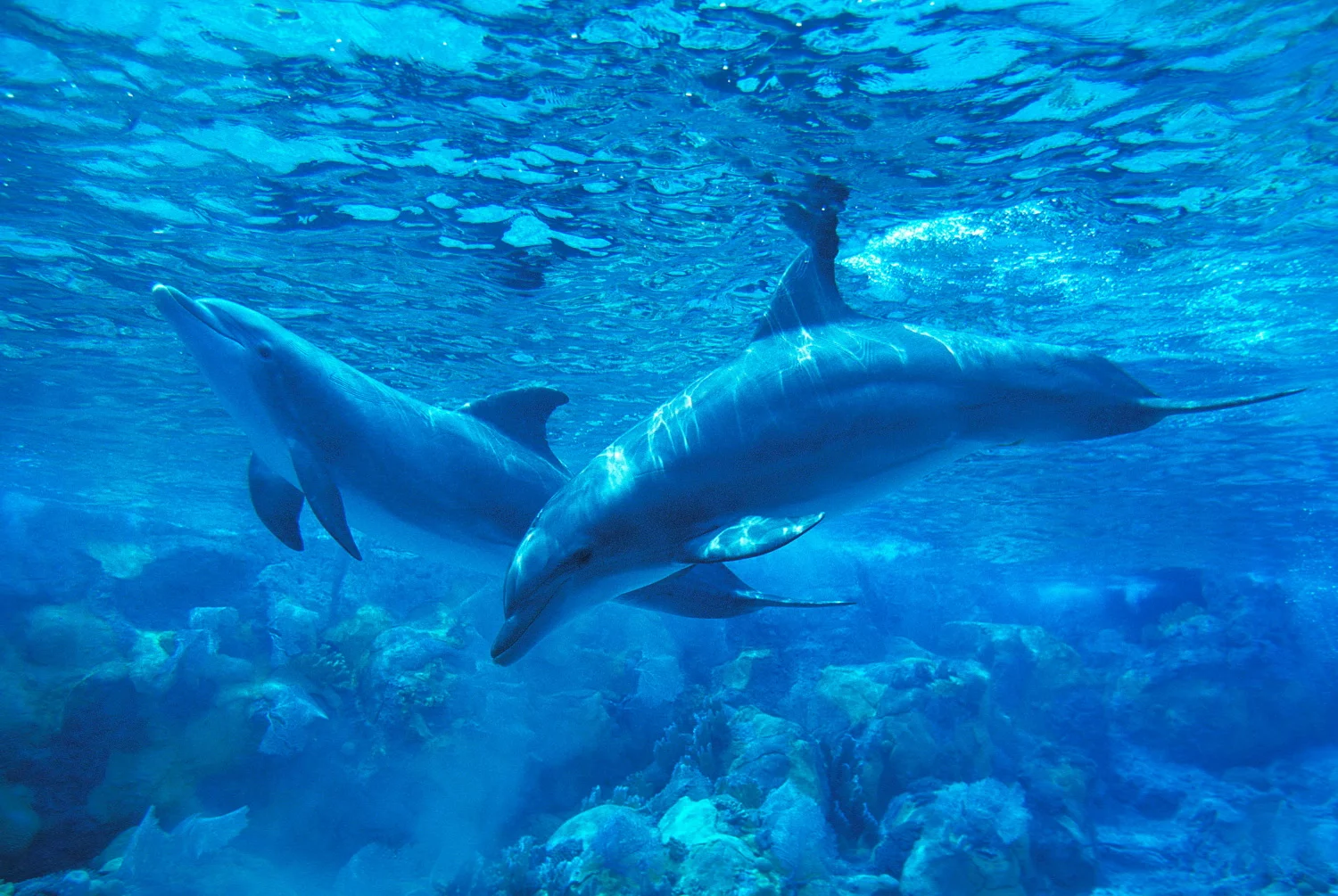Habitat Directive : Annex II, IV. MED Conservation Status: Unknown
IUCN Red List: “Least Concern” (LC), with a worldwide population of around 750,000, considering however that not the entire range was surveyed. In the Mediterranean, it was recently assessed as Least Concern (LC), excluding the sub-population in the Gulf of Ambracia in Greece, which is considered ‘Critically Endangered’. In Italian waters there are around 10,000 individuals (Ligurian Sea, around 1,200 individuals; Central Tyrrhenian Sea, 1,200; Lampedusa, 176; Adriatic Sea, around 5,000).
Sighting possibilities
A cosmopolitical species, it is permanently present throughout the Mediterranean, mainly along coastal waters. Sightings are common in Italy, even in highly anthropized areas. In the Adriatic, the number of individuals has declined in recent decades. In Sicily, it can be encountered along the entire coast. Numerous sightings have been recorded in the most studied areas of Lampedusa, the Aeolian Islands and the Strait of Messina. As well as along the coasts, it also inhabits islands and archipelagos where the continental shelf is present and is sometimes observed in deep-sea pelagic areas. Recent studies suggest the presence also in the Mediterranean of two ecotypes: one with a coastal distribution, the other with a more offshore or pelagic habitat.
These dolphins can be very active, mostly when feeding and socialising. Aerial behaviour may include leaping, head and tail flapping, and throwing seaweed or prey into the air.
How to recognise it at sea
Size: variable depending on the seas, in the Mediterranean it is around 2-3 meters and 150-180 kilograms. Females are slightly smaller than male.
It is agile and fast (reach 40km per hour), despite his relatively stocky build. He is often seen jumping out of the water to perform acrobatic evolutions. It has a fairly homogenous coloration: smoky grey back, light grey flanks and belly. From the boat, depending on the light conditions, the grey tones also change to brown. The dorsal fin is curved in the shape of a sickle, on the head the melon is pronounced and the rostrum fairly short and stubby.
Biological notes
Odontocete cetacean, belonging to the family Delphinidae. Strongly opportunistic for food, it feeds mainly on fish, cephalopods and crustaceans and easily develops new feeding strategies depending on available resources. It has thus learnt to hunt on trawls, gillnets and near fish farms. For these behaviours it is disliked by fishermen. Females reach sexual maturity at 10 years of age, males at 13. After mating and a 12-month gestation period, a young of about 1 metre in length is born. The average lifespan is about 30 years. Bottlenose dolphins are social animals, living in herds that can range from 2 to 200 individuals, but more frequently between 5 and 15. The herds consist of females and young, with males joining briefly. ‘Alliances’ of sub-adult (adolescent) dolphins and adult males are also common, often within the same natal group. The highly complex social structure appears to follow a pattern called ‘fission-fusion’, in which the size and composition of groups change dynamically, and the females of the community are related but not necessarily along a single matriarchal line.
They are highly vocal and produce three main categories of sounds: whistles, echolocation clicks and pulse sounds.
Curiosities
- Each specimen is characterised by its own ‘signature whistle’, which is consolidated within the first year of life. It is a distinctive signal used for individual recognition for mother-child relationship, for coordinating lactation behaviour, and generally for communicating with the whole pod.
- Through the photo-identification, single dolphins can be identified by cuts and scars on their dorsal fins. Some dolphins in well-studied population have been spotted again after decades
- • Adult bottlenose dolphins have been observed in aggressive interactions with their young. Some researchers have interpreted this as disciplinary behaviour, but infanticide in this species is now also well documented.
- It is a very promiscuous species, mating not only for reproductive purposes but also for fun, or even with intimidating and aggressive attitudes.
- Several cases of epigenetic care (dictated by the urge to take care of the cubs) have been documented, reflecting the strong mother-child bond. These include cases of individuals caring for deceased young for prolonged periods of time.
- Bottlenose dolphins have also been used by the military to perform tasks considered too risky for human divers. It is the species most often trained to perform shows in marine parks around the world





